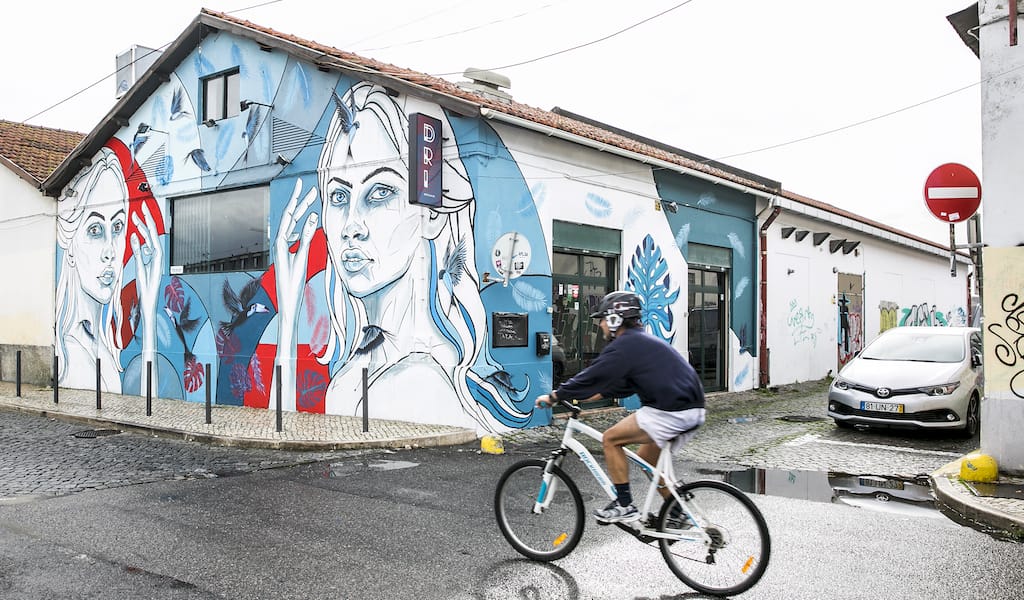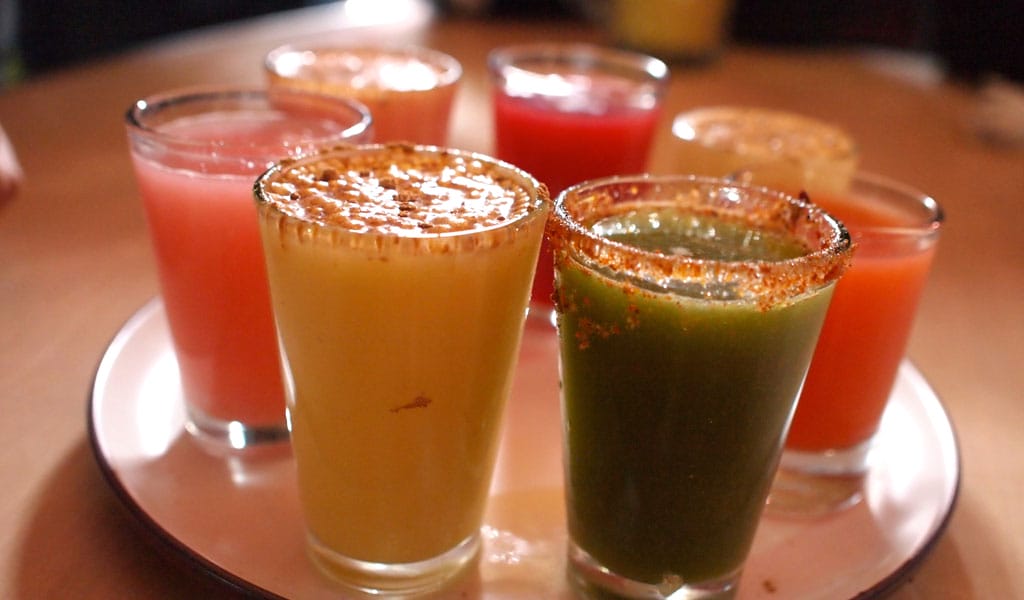Editor’s note: This is a new installment in an occasional series about where to wet your whistle in true Tokyo style.
Every Tokyo neighborhood has its standing bars, usually near the train station. Azabu Juban’s most popular, Juban Stand, is located on a backstreet running parallel to the shoten gai shopping street. It spills out onto the sidewalk, where old kegs offer patrons the chance to drink a few beers while enjoying life on the street. Inside, a standing area snakes down the bar to the back, ending with a jumble of stools and stairs leading to a small balcony with a few wonky tables for those who prefer to sit and linger.
Happy Hour begins sometime in the afternoon and continues until 7 p.m., with drinks for less than $3. At Juban Stand, nuts and tidbits are available for purchase in small cans from a vending machine. Patrons range from backpacker types and college students meeting for a few laughs before heading home, to self-assured bankers down from the nearby towers of power meeting up before moving on to greener pastures. Behind the serving counter is a revolving, picturesque group of adventurers working to save up for the next escapade. Tattoos, basically frowned upon in Japan, are frequently displayed and talk is loose and easy, as befits a proper drinking establishment in the West.
The chefs behind the bar cook on a Japanese teppan grill. We quickly ordered taco (squid), which arrived juicy and succulent, surrounded by ginger and Japanese scallions. Fried potatoes, an inevitable bar food in Japan, remained freshly crisp as we ran them through a mountain of mayonnaise. Mayonnaise is possibly one of the greatest condiments available in Japan: Unlike American mayo, it’s made without water and contains rice or apple vinegar instead of distilled vinegar, plus only egg yolks instead of whole eggs. The texture is denser and the taste is richer.
After a few nibbles and a few drinks of sparkling wine and beers at Juban Stand, it was time to move on, as people began to gather two deep along the bar to start an evening of drinking.
At Le Bar à Vin 52, the clientele had come for a longer stay. The wine bar is located up a flight of stairs above the local Seijo Ishii gourmet food outpost. The popular Seijo Ishii stores are stocked with high-end groceries and takeaway foods. The chain is also the landlord for Le Bar à Vin 52 and stocks its wine. All the bottles of wine in the bar are marked up 2,000 yen (about $17) above the retail price downstairs. Customers who want a special, pricey wine are encouraged to visit the store to buy their own wine and bring it up to the bar, for the same 2,000 yen corkage fee. 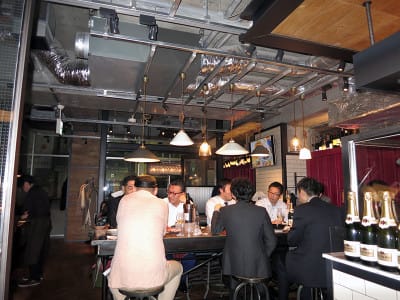 We chose a lovely Italian from the wine list, happy to be able to enjoy it for a reasonable amount. Great wines are also available by the glass.
We chose a lovely Italian from the wine list, happy to be able to enjoy it for a reasonable amount. Great wines are also available by the glass.
Le Bar à Vin 52 has many seating areas: a counter dining, an area for larger parties and a small cluster of tables for two, offering a great place for conversation or a romantic night out. We always prefer the counter, where we can watch an impressive array of food being ferried from the kitchen. There is a large selection of European cheeses displayed in a case near the entrance and Le Bar will gladly make up a cheese plate for nibbling before your heartier food arrives. There is a classic fondue and crusty bread. First up for us was a mound of glistening prosciutto served over arugula to complement the Barolo we’d selected (although we’d been sorely tempted to break our budget with the caviar and smoked salmon). We enjoyed a perfect plate of al olio pepperoncino pasta and a side of braised cabbage with baby anchovies, but saved room for a perfectly cooked Japanese steak, thinly sliced and served with Inland Sea salt.
Drinking in Tokyo entails being mindful of the Rules of Public Transportation. Tokyo is held together by its train system. It is a dense and vast city in which almost everyone takes at least one train during the course of their day, and it is not unusual to commute to work an hour in each direction. The public train system in Tokyo generally stops running at 1 a.m., so as to cut down on noise from trains that run literally meters away from people’s homes. Most izakayas, bars and drinking establishments begin to empty out at 11 or 11:30 p.m., when people, including the bar’s employees, begin to rush Cinderella-like to make sure they’re on the last trains out for the long commute home. On weekdays, Le Bar à Vin 52 closes appropriately to match train schedules. Juban Stand, meanwhile, remains open for most of the night. For those who overstay their bar’s closing, McDonalds or Burger King offer refuge over a cup of coffee until the trains start to run again at 5:00 a.m. There is one conveniently located on the shoten gai.
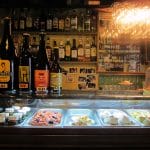 February 20, 2013 Quimet
February 20, 2013 Quimet
De toda la vida is a Spanish expression that basically means “It’s been around forever,” […] Posted in Barcelona December 3, 2018 Boteco da Dri
December 3, 2018 Boteco da Dri
Considering that Brazilians form the largest foreign community in Lisbon, it’s […] Posted in Lisbon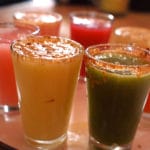 April 7, 2017 Pulque
April 7, 2017 Pulque
Milky, tart, viscous and slightly foamy. At first glance and sip, there’s little to […] Posted in Mexico City
Published on February 09, 2016
Related stories
February 20, 2013
Barcelona | By Johanna Bailey
BarcelonaDe toda la vida is a Spanish expression that basically means “It’s been around forever,” and it’s a sure thing that the locals in Barcelona’s Gràcia neighborhood will utter those words if you ask them about Bodega Quimet. Opened in the 1950s by the Quimet family, the bodega (not to be confused with Quimet i…
December 3, 2018
LisbonConsidering that Brazilians form the largest foreign community in Lisbon, it’s disappointing there aren’t more “green and yellow” restaurants in the city. Outside of a rodízio (all-you-can-eat grilled meat restaurants) boom that came and went in the 80s, there’s not much in the way of interesting Brazilian spots in the city (with a few exceptions,…
Sample the city's best pulque on our culinary walk.
April 7, 2017
Mexico CityMilky, tart, viscous and slightly foamy. At first glance and sip, there’s little to explain why pulque – a mildly alcoholic drink made by fermenting the fresh sap of certain types of maguey, the same plant used for making mezcal – has remained a trusted companion to Mexican drinkers since Aztec times. Pulque, actually, has…













































